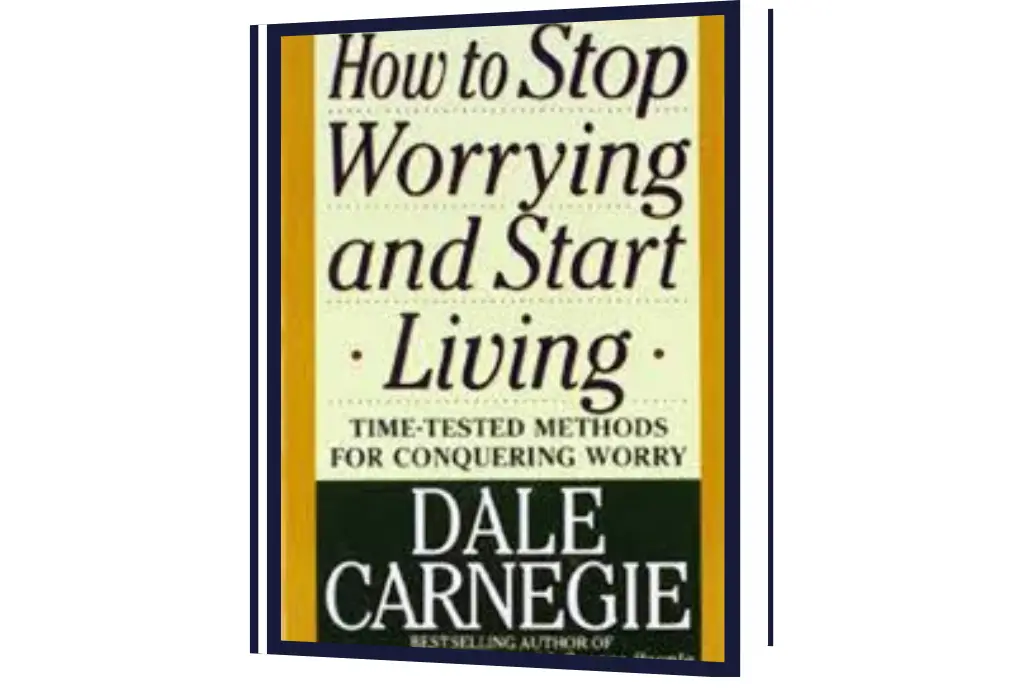Dale Carnegie offers a set of practical formulas you can put to work today — formulas that will last a lifetime! Discover how to:
* Eliminate fifty percent of business worries immediately
* Reduce financial worries
* Turn criticism to your advantage
* Avoid fatigue — and keep looking young
* Add one hour a day to your waking life
* Find yourself and be yourself — remember, there is no one on earth like you!
How to Stop Worrying and Start Living deals with fundamental emotions and ideas. It is fascinating to listen to and easy to apply. Let it change and improve you. There’s no need to live with worry and anxiety that keep you from enjoying a full, active and happy life!
Introduction
Dale Carnegie’s How to Stop Worrying and Start Living is a timeless classic, first published in 1948. The book delves into the psychology of worry and offers practical, actionable advice on overcoming anxiety and achieving a fulfilling life. Carnegie’s insights are based on research, historical examples, and personal anecdotes from people who successfully dealt with their worries. His objective is to help readers live more productive, worry-free lives by shifting their focus away from fear and toward action and solution-based thinking.
Carnegie divides the book into several sections, each focusing on different strategies for managing and overcoming worry. These sections cover how to tackle daily anxieties, build positive mental habits, and develop emotional resilience. His principles are timeless, still relevant in today’s fast-paced world, where stress and worry dominate much of modern living.
Part 1: Fundamental Facts You Should Know About Worry
The first part of the book focuses on understanding the nature of worry and its debilitating effects. Carnegie asserts that worrying about the future or dwelling on the past accomplishes nothing but emotional paralysis. He shares examples of individuals who lost years of their lives to worry, illustrating how excessive anxiety can lead to both mental and physical exhaustion.
Live in “Day-Tight Compartments”
One of the central ideas in this section is Carnegie’s recommendation to live in “day-tight compartments.” He borrows this concept from Sir William Osler, a famous physician, who advised that life should be lived one day at a time, with our thoughts focused only on today’s tasks and challenges. Worrying about the future or regretting the past are exercises in futility. Carnegie emphasizes that success and peace of mind come from addressing the present moment.
He uses powerful examples, such as famous historical figures who faced overwhelming challenges by concentrating only on what was within their control at the present moment. The lesson: If you focus on today, tomorrow will take care of itself.
Magic Formula for Solving Worry Situations
Carnegie presents a simple, yet effective, three-step formula for resolving worry. First, identify the worst-case scenario. Then, accept the worst-case scenario mentally. Finally, focus all your energies on improving the worst-case outcome. This mental process helps reduce the emotional weight of worry by removing the fear of the unknown, allowing people to think clearly and find solutions.
Part 2: Basic Techniques in Analyzing Worry
In this section, Carnegie offers practical techniques for analyzing the causes of worry and eliminating it effectively. He believes that much of our worry is due to a lack of clear thinking. The book encourages readers to break down problems into manageable parts.
Get the Facts
Carnegie advises that getting the facts is the first and most critical step in solving any worry situation. He states that 50% of our worries vanish when we have accurate information. Instead of allowing emotions to cloud our judgment, Carnegie advocates for taking a logical and calm approach, gathering facts, and then evaluating them objectively.
He explains that many people often worry about situations based on assumptions, rumors, or misinformation, which leads to undue anxiety. Therefore, by focusing on reality and rejecting speculation, one can drastically reduce the burden of worry.
Weigh the Facts
Once the facts are gathered, Carnegie suggests weighing them objectively. He encourages readers to use logic rather than emotions to evaluate situations. By weighing the facts, it becomes easier to understand whether a worry is legitimate or unnecessary. This approach helps minimize exaggerated fears and enhances decision-making.
Arrive at a Decision and Act on It
Carnegie stresses the importance of decisive action in overcoming worry. After analyzing the facts, one must make a decision and act on it immediately. Indecision is one of the main causes of prolonged worry, so the quicker a decision is made, the sooner the mind can focus on action rather than anxiety.
Carnegie outlines a process for arriving at decisions effectively: break the problem into smaller parts, evaluate each part objectively, decide on the best course of action, and then execute it. This strategy ensures that worry is replaced with proactive behavior.
Part 3: Break the Worry Habit Before It Breaks You
In this section, Carnegie delves deeper into methods for permanently eliminating the habit of worry. He advocates for mental conditioning, emphasizing that persistent worry often becomes a habit. Therefore, developing new mental habits is essential for breaking free from constant anxiety.
Keep Busy
One of Carnegie’s most effective strategies is to keep oneself occupied. He believes that worry thrives in idle minds. By staying busy with purposeful tasks, we limit the opportunity for worry to creep into our thoughts. When our minds are focused on positive, productive activities, there is little room for anxiety to take hold.
Carnegie shares numerous examples of individuals who overcame worry simply by immersing themselves in work, hobbies, or service to others. The distraction of being busy prevents the mind from fixating on problems.
Don’t Let Small Things Get You Down
Carnegie advises readers to avoid sweating the small stuff. Most of what we worry about is insignificant in the grand scheme of life. He reminds readers that minor irritations should not be allowed to ruin their peace of mind. To illustrate, he shares the famous “law of averages,” which shows that many of the worries that plague us never come to pass. The statistics alone demonstrate the futility of most anxiety.
To combat this, Carnegie suggests focusing on bigger life goals and letting go of trivial matters. This mental shift can help prevent undue stress caused by everyday frustrations.
Use the Law of Averages to Outlaw Worries
Another crucial tool Carnegie offers is the “law of averages.” This principle encourages readers to consider the likelihood of their worries actually coming true. Carnegie explains that many people waste time worrying about events that are statistically improbable. By understanding the low probability of such events, one can outlaw unnecessary fears and reclaim mental peace.
Cooperate with the Inevitable
Carnegie urges readers to cooperate with the inevitable. In other words, accept that some events are beyond control. By embracing this reality, individuals can stop resisting the unavoidable and instead focus on what they can influence. He illustrates this idea with several real-life examples where people found peace by accepting their fate and moving forward, rather than fighting it.
This technique helps reduce worry by freeing the mind from trying to control the uncontrollable, ultimately leading to more emotional freedom.
Part 4: Cultivate a Mental Attitude That Will Bring You Peace and Happiness
This section highlights the importance of a positive mental attitude and how cultivating the right mindset can bring about lasting peace and happiness.
Fill Your Mind with Positive Thoughts
Carnegie emphasizes that the mind can only focus on one thing at a time, so by filling the mind with positive thoughts, it becomes impossible for worry and negativity to take root. He encourages readers to immerse themselves in uplifting ideas, inspirational books, and happy thoughts as a way of conditioning the brain for positivity.
He also shares the story of the famous American philosopher William James, who once stated that the greatest discovery of his generation was the realization that people can change their lives by changing their attitudes of mind.
Expect Ingratitude
A major source of worry stems from unrealistic expectations, especially when it comes to the gratitude or acknowledgment of others. Carnegie suggests that we should expect ingratitude, as this helps prevent disappointment and hurt. By setting realistic expectations and accepting that people may not always appreciate our efforts, we protect ourselves from unnecessary emotional distress.
This mindset helps reduce feelings of frustration and fosters emotional resilience when dealing with others.
Count Your Blessings
Carnegie introduces the practice of counting one’s blessings as an antidote to worry. Gratitude, he argues, is a powerful tool for mental well-being. By consciously focusing on what we have instead of what we lack, we shift our perspective from one of scarcity to one of abundance. This practice has been proven to lift mood and reduce anxiety, fostering contentment and peace of mind.
He encourages readers to make this practice a daily habit, noting that it can completely transform one’s mental and emotional state over time.
Part 5: The Perfect Way to Conquer Worry
In this part, Carnegie discusses a foolproof way to overcome worry: living a life dedicated to service and a higher purpose.
Find Your Purpose in Life
Carnegie believes that when people dedicate their lives to serving others or working toward a meaningful goal, they have less time to worry about trivial matters. A higher sense of purpose keeps the mind focused on constructive activities and long-term rewards, eliminating the space for anxiety.
Carnegie draws from religious and philosophical teachings, noting that many spiritual leaders have long recognized that service to others is the antidote to personal unhappiness.
Part 6: How to Keep From Worrying About Criticism
The fear of criticism is another major source of worry for many people. Carnegie tackles this issue head-on, offering advice on how to deal with negative feedback constructively.
Remember That Unjust Criticism Is Often a Compliment
Carnegie shares the idea that unjust criticism often stems from envy or jealousy. Therefore, it can be seen as a backhanded compliment. Those who succeed or stand out in any way will inevitably attract criticism. Instead of letting it weigh them down, Carnegie encourages readers to accept it as a natural part of life and an indicator that they are doing something right.
He also advocates for reflecting on the criticism objectively—if it has merit, it can serve as valuable feedback for personal growth. If not, it should be ignored and not allowed to disturb one’s peace.
Conclusion
How to Stop Worrying and Start Living is an indispensable guide for anyone looking to overcome anxiety and live a more fulfilled, worry-free life. Carnegie’s methods are practical, straightforward, and grounded in common sense. By applying his strategies—such as living in day-tight compartments, taking decisive action, and cultivating







